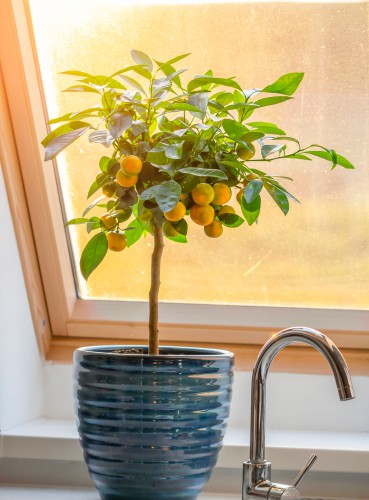Last updated on March 31st, 2022
Our site is reader supported, this means we may earn a small commission from Amazon and other affiliates when you buy through links on our site.
Orange trees are evergreen citrus trees and this means that they don’t lose their leaves come autumn. They produce beautiful flowers that are white and scented, which result in delightful fruits six months later. Once the fruit is ripe, you can eat it straight off the tree. If you are growing orange trees in Britain, there are a few diseases and other problems that you should be on the lookout for and you will be pleased to know that most can be resolved with a little extra care.

It is worth noting that many of the problems people experience when growing orange trees are caused by incorrect growing conditions. With this in mind, be sure to read our guide on growing orange trees in pots.
1. Root rot caused by overwatering

A critical issue you may face is root rot and this occurs when you water them too much or too often, and the roots are left standing in water. If you notice standing water or you don’t let the soil dry out in between waterings, start doing so. Root rot can be avoided by simply watering properly which means letting the surface of the soil dry out between each watering session. If you place a saucer underneath the pot to collect the water it’s also important you empty the excess water and that you don’t leave the pot sitting in water.
2. Pests such as aphids and leaf miners

While not technically a disease, pests can be equally problematic for citrus trees like oranges. The most common pests you will face are aphids and mealybugs. Both of these hide underneath the leaves, and they suck the sap out from the leaf tissue. This will cause the leaves to curl and eventually fall off.
Mealybugs leave small deposits all over the plant, and you will see what looks like tiny cotton wool deposits. Both of these pests leave a substance that is sappy and sticky on the leaves (as pictured above) and this substance prevents the leaves from properly breathing. If you don’t clean it off and treat the issue it will manifest in black soot that prevents any sunlight from reaching the leaves, eventually killing your orange tree.
Treat aphids and mealybugs with an insecticidal soap or pesticide spray
At the first sign of these pests, you need to wash them off entirely from all the leaves and all the stems, regularly inspecting your orange tree for any indication of them. You will need to wipe down every leaf to remove the sappy secretion and any black soot, otherwise, the leaves will still suffocate. You can use insecticidal soap sprays as well as commercial bug killers designed for fruit. Your overall goal is to remove each and every bug and continue to repeat the process until the problem is completely eradicated.
If you have leaves that are badly affected we recommend removing them by hand rather than trying to clean them off.
- Contact insecticide that can protect from pests for up to 2 weeks
- Kills most common insect pests on an extensive range of ornamental plants
- Protects over 30 different crops from insect attack
- Use indoors or outdoors.
3. Leaf drop
This problem is one that manifests in the form of a significant portion of the leaves falling off your tree. Now, most citrus trees in Britain have to be grown in pots so that they can be moved indoors over the winter. During this process, you might notice a handful of leaves falling, especially in January and February, this is perfectly normal.

If a significant number of leaves fall, you need to check the soil. If the soil is too dry you need to increase watering and mist your plant regularly to increase the humidity.
Be careful here though, because too much water can be equally detrimental, so you need to allow the compost to dry out before subsequent waterings. Many people who leave the soil to become too dry and then find themselves contending with leaf drop make the mistake of overcompensating. This can unfortunately then cause root rot which is even more fatal to the tree.
Being exposed to cold temperatures can also cause leaf drop.
Learn more about pests and diseases that can affect citrus trees
Image credits – Shutterstock.com
Last update on 2025-12-13 / Affiliate links / Images from Amazon Product Advertising API



